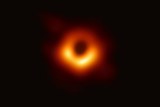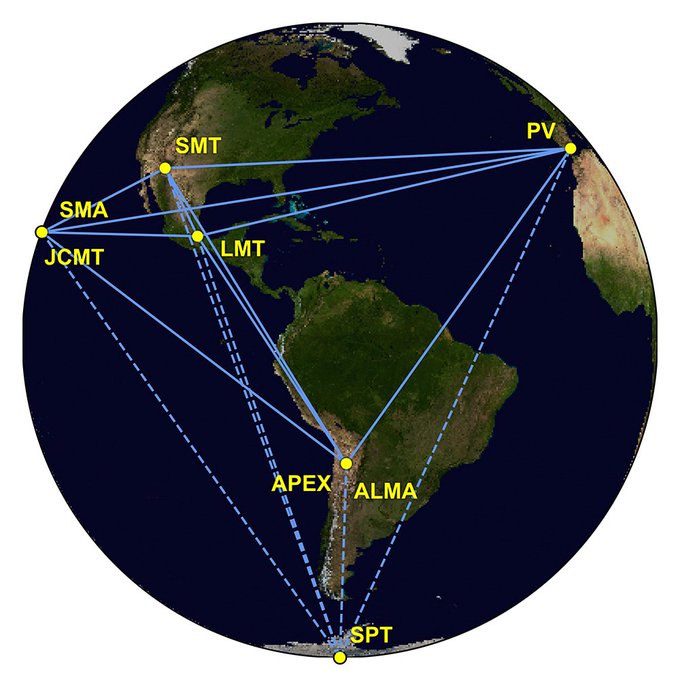And the werewolves.
At least the Hippie Gardeners wouldn’t need to stress so much about when to plant stuff.
Have to rewrire a few songs.
Fly Me to the Moons
Moonsriver
Bad Moons Rising
Moonsshadows
Walking on the Moons
Harvest Moons
And think of how many extra moonlandings you could fake in the Smithsonian basements!
Jupiter has 79 known moons.
Neil Armstrong:. I was first man to set foot on the moon.
JSA (Jovian Space Agency) astronaut:. Pffft. Which one? I’ve visited 32 and holidayed on 7.
If you could comfortably drive all the way around the moon in under an hour (I know, but still), then does it really deserve to be called a moon?
Do we need a new term?
How about a BRIO (big rock in orbit).
Edit: I have a difficult time accepting that astronomers can look at seahorse and Europa and say, ‘yeah…pretty much the same thing.’
If it orbits the planet I’m ok with it getting moon status. Or perhaps “permanently orbits”. Because I think Earth occasionally picks up a short term “moon” that falls into orbit but is soon off and about again?
Is it fair that I laugh every time at the first voice you hear in this…
Anyway, I’d like @benfti comment on this…building a rocket launch facility in Arnhem land!!!
There are some very clever people out there doing some truely amazing stuff.
Black hole image released by Event Horizon Telescope team in world first - Science News - ABC News
Tegan TaylorUpdated 58 minutes ago

The first photo ever released of a supermassive black hole. This image shows M87, which is at the centre of our neighbouring Virgo A galaxy.
(Supplied: Event Horizon Telescope)
Scientists have glimpsed the event horizon of a black hole for the very first time.
Key points:
- The world-first image shows the supermassive black hole at the centre of M87, a neighbouring galaxy to our own Milky Way
- The image is the result of a seven-year project linking telescopes all over the world to create ‘a dish the size of the planet’
- The fact the image matches so closely to predictions is a confirmation of Einstein’s theory of general relativity
Until now, every image of a black hole you have ever seen has been an artist’s impression.
“We’ve been studying black holes so long that sometimes it’s easy to forget that none of us has actually seen one,” said France Cordova, director of the US National Science Foundation, at one of seven simultaneous press conferences where the scientists announced their findings to the world.
“This is a huge day in astrophysics. We’re seeing the unseeable.”
The first image shows a bright fringe of gas, which is being squeezed and heated as it falls towards the event horizon of a supermassive black hole at the centre of M87, a galaxy near our own Milky Way.
This cosmic monster sits 55 million light-years from Earth and is 6.5 billion times heavier than the Sun.
Black holes are notoriously hard to see, because their gravitational pull is so strong that nothing — not even light — can escape once it crosses the black hole’s event horizon, the point of no return.
Today’s historic portrait is the result of decades of theoretical predictions and technical advances.
“This is an extraordinary scientific feat accomplished by a team of more than 200 researchers,” said Dr Sheperd Doeleman from the Harvard-Smithsonian Centre for Astrophysics.
“We have achieved something presumed to be impossible just a generation ago.”
He pioneered the instrument making it all possible: the Event Horizon Telescope (EHT), which is actually a network of radio telescopes spanning the globe.
Their combined observing power has been trained on two supermassive black holes, including the one in the centre of our own Milky Way galaxy, Sagittarius A*.
This is situated 26,000 light-years from Earth and is 4 million times the mass of our Sun, but by supermassive black hole standards, it is pretty small.
The other — the subject of Wednesday’s image — is much bigger, but also much further away, at the centre of the nearby galaxy M87.
On Wednesday the EHT team called a press conference. Seven press conferences, to be exact, on four continents and in five languages, all starting at 11:00pm AEST.
Nobody outside the project knew exactly what they would be announcing, but they had declared it was “a groundbreaking result”.
The finding was also announced today in a series of six papers published in a special issue of The Astrophysical Journal Letters.
While the project aimed to observe two supermassive black holes, only one image was released today.
· 7h
How was this image created? A giant global network of radio/millimeter-wave telescopes joined together to create a virtual PLANET-SIZED telescope. The image is patched together from the data from all of these. #EHT #BlackHole (image: Akiyama et al and ApJL)
There’s a brief write-up at @PhysicsWorld here: https://physicsworld.com/a/first-images-of-a-black-hole-unveiled-by-astronomers-in-landmark-discovery/ … with more images. Here’s the image seen (left) compared with a simulation (middle) and the simulation blurred to the expected resolution of the telescope (right). (Image via Akiyama et al & ApJL) pic.twitter.com/UqAVdUtndK
2,628 people are talking about this
A telescope the size of a planet
The EHT initiative kicked off seven years ago with the aim of directly observing the immediate environment of a black hole.
One of the telescopes in the network is the James Clerk Maxwell Telescope on top of Mauna Kea peak in Hawaii, where Australian Jessica Dempsey is deputy director.
“We’ve made a dish the size of the planet,” she told ABC’s Catalyst earlier this year.
By combining results from nine separate dishes, scattered from Antarctica to Europe, Dr Dempsey and her colleagues can create a virtual telescope 9,000 kilometres in diameter, making it the world’s biggest camera.
“To give you an idea of how small a thing you can see, if you’re sitting in a pub in Perth, you would be able to see a guy sitting in the pub in Sydney, not only would you be able to see him, you’d be able to see his eye colour, and you’d be able to see the brand of beer he was drinking,” she said.
Getting this global telescope network in sync has been an exercise in precision. The operators had to know the timing of the signals at every one of these telescopes to a billionth of a second to make sure they were all looking at the same thing at the same time.
These locations included volcanoes in Hawaii and Mexico, mountains in Arizona and the Spanish Sierra Nevada, the Chilean Atacama Desert, and Antarctica.
“We are stacking impossible task on top of impossible task and this shouldn’t work,” Dr Dempsey said.
But as tonight’s announcement made clear — it did work.
“It’s the first time that we’ve had the resolution to look close enough to try to capture a picture of an actual black hole,” said Professor Tamara Davis, an astrophysicist from the University of Queensland.
What does it all mean?
That goes to the heart of the excitement of this announcement, for physicists at least.
The conditions near the event horizon of a supermassive black hole are so extreme that they put unprecedented pressure on Einstein’s theory of general relativity.
Professor Davis said she was “dumbstruck” when she saw the image.
“It’s crazy. I didn’t expect that it would be quite that good. It looks beautiful — and just exactly like the simulation says it should.”
The unevenness of the object in the image is another clue Einstein was spot on, Professor Davis said.
“You can see that one side of that ring is brighter than the other, and that’s the side that’s coming towards us as the whole thing spins,” she said.
“That was also predicted by relativity — that if it was spinning, and most things do tend to spin, then it would have one side that was brighter than the other.”

Of course black holes exist, but its possible to make that image with Photoshop. Easily.
So you’re saying they faked it?
For what purpose exactly?
We have a “black hole”.
It’s existence changes nothing.
We can’t Test the theory.
Next…
This.
Fair effort , that. But to play devil’s advocate, the event horizon isn’t really a photo of the “black hole” , and ultimately was a question of observation power/computation. Come back to me with a pic of the singularity! Then I’ll be truly impressed. 
.
.
.*. I’d better add that this post is (largely) tongue in cheek, lest I outrage people.
From what I was reading quite a bit of theory surrounding black holes including some of the functioning of general relativity can be tested based on how that simple image of the area around the event horizon looks.
Yep, it’s another little piece in the vindication of Einstein’s GTOR .
It’s what possibly happens beneath the event horizon that I find truely fascinating, and we (humanity) probably never ever know.
I met the CEO of a very interesting company recently. I could have posted this in the Science or even Tesla threads, but one application of his technology will revolutionise e.g. launching satellites at five times the speed of sound!
They even do it without rockets!
Check it out - this is incredible stuff.
More info:
https://www.hypersciences.com
What’s the propulsion, AT? Electro magnetic?
He did not give many details. They burn a special blend of"cheap" fuels that propels the payload. He also mentioned something else that is not on the website so I better not disclose that.
The particles they use for drilling applications are small cartridges made of plastic and concrete but can shatter the hardest granite.

 @AstroKatie
@AstroKatie
